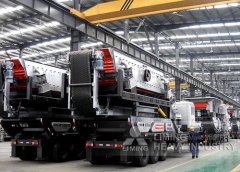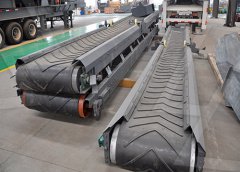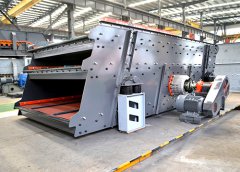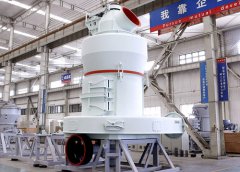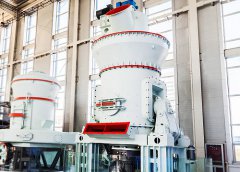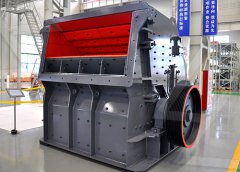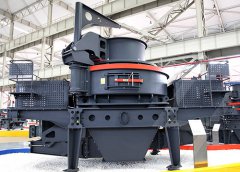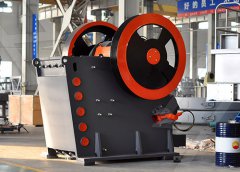
The agglomeration, coalescence and sliding of nanoparticles
The conventional sintering of a porous green body consisting of coarse polycrystalline particles is a process of grain-growth-induced densification facilitated by atomic diffusion at...From the point of view of inhibiting CMTF agglomeration and sintering, controlling the ROC of OC and reducing the residence time and reaction gas concentration of OC in the fuel reactor can prolong the safe operation of CMTF peroxides in industry.Sintering and agglomeration characteristics of industrially
احصل على السعر
Structure and dynamics of fractal‐like particles made by agglomeration
Coagulation by simultaneous agglomeration and sintering takes place at high temperature environments, where sintering and collision rates are comparable. The effect of temperature on aggregate mobility and gyration radii, particle morphology, and collisional enhancement is elucidated.Abstract. Discrete element method (DEM) is used to study the factors affecting agglomeration in three-dimensional copper particle systems during solid-state sintering. A new parameter is proposed to characterize agglomeration. The effects of a series of factors are studied, including particle size, size distribution, inter-particle Factors influencing particle agglomeration during solid-state sintering
احصل على السعر
Factors in fluencing particle agglomeration during solid
Agglomeration is a result of drastic rearrangement of parti- cles at the early stage of sintering, during which shrinkage occurs within many regions and the particles in each region are drawn inwards towards the geometrical center of the re-The results show that the agglomeration of supported nanoparticles is mainly based on the mechanism of small particle migration and growth. Small-sized particles with high surface energy determine the sintering rate. In addition, the increase of temperature is conducive to the agglomeration of particles, especially for systems with Sintering Rate and Mechanism of Supported Pt
احصل على السعر
The agglomeration, coalescence and sliding of
Sintering is the oldest method for the effective consolidation of particles into dense monoliths with tailored micro- structures and properties. The studies setting the foundations date back to2.1 Introduction Sintering is a process that consists in the thermal agglomeration of a mixture of fines that comprise iron ore, recycled iron and steelmaking products, slag-forming elements, and solid combustible (coke).Sintering SpringerLink
احصل على السعر
The sintering temperature of ash, agglomeration, and defluidisation in
Sintering or agglomeration is formed in the process of the gasification of coal when fluxing K 2 CO 3, which leading to the entire bed defluidization. In order to study the catalytic coal gasification reactivity and agglomeration properties in pressurized fluidized bed, Wangjiata raw coal, demineralized coal with HCl-HF treatment, and raw coalAgglomeration in Metallurgy Home Book Authors: Aitber Bizhanov, Valentina Chizhikova Comprehensive analysis of modern agglomeration technologies in steel making Deep scientific description of the agglomeration technologies Discusses sinter and pellet production Part of the book series: Topics in Mining, Metallurgy and Materials Agglomeration in Metallurgy SpringerLink
احصل على السعر
The agglomeration, coalescence and sliding of nanoparticles
The conventional sintering of a porous green body consisting of coarse polycrystalline particles is a process of grain-growth-induced densification facilitated by atomic diffusion at...From the point of view of inhibiting CMTF agglomeration and sintering, controlling the ROC of OC and reducing the residence time and reaction gas concentration of OC in the fuel reactor can prolong the safe operation of CMTF peroxides in industry.Sintering and agglomeration characteristics of industrially
احصل على السعر
Structure and dynamics of fractal‐like particles made by agglomeration
Coagulation by simultaneous agglomeration and sintering takes place at high temperature environments, where sintering and collision rates are comparable. The effect of temperature on aggregate mobility and gyration radii, particle morphology, and collisional enhancement is elucidated.Abstract. Discrete element method (DEM) is used to study the factors affecting agglomeration in three-dimensional copper particle systems during solid-state sintering. A new parameter is proposed to characterize agglomeration. The effects of a series of factors are studied, including particle size, size distribution, inter-particle Factors influencing particle agglomeration during solid-state sintering
احصل على السعر
Factors in fluencing particle agglomeration during solid
Agglomeration is a result of drastic rearrangement of parti- cles at the early stage of sintering, during which shrinkage occurs within many regions and the particles in each region are drawn inwards towards the geometrical center of the re-The results show that the agglomeration of supported nanoparticles is mainly based on the mechanism of small particle migration and growth. Small-sized particles with high surface energy determine the sintering rate. In addition, the increase of temperature is conducive to the agglomeration of particles, especially for systems with Sintering Rate and Mechanism of Supported Pt
احصل على السعر
The agglomeration, coalescence and sliding of
Sintering is the oldest method for the effective consolidation of particles into dense monoliths with tailored micro- structures and properties. The studies setting the foundations date back to2.1 Introduction Sintering is a process that consists in the thermal agglomeration of a mixture of fines that comprise iron ore, recycled iron and steelmaking products, slag-forming elements, and solid combustible (coke).Sintering SpringerLink
احصل على السعر
The sintering temperature of ash, agglomeration, and defluidisation in
Sintering or agglomeration is formed in the process of the gasification of coal when fluxing K 2 CO 3, which leading to the entire bed defluidization. In order to study the catalytic coal gasification reactivity and agglomeration properties in pressurized fluidized bed, Wangjiata raw coal, demineralized coal with HCl-HF treatment, and raw coalAgglomeration in Metallurgy Home Book Authors: Aitber Bizhanov, Valentina Chizhikova Comprehensive analysis of modern agglomeration technologies in steel making Deep scientific description of the agglomeration technologies Discusses sinter and pellet production Part of the book series: Topics in Mining, Metallurgy and Materials Agglomeration in Metallurgy SpringerLink
احصل على السعر
The agglomeration, coalescence and sliding of nanoparticles
The conventional sintering of a porous green body consisting of coarse polycrystalline particles is a process of grain-growth-induced densification facilitated by atomic diffusion at...From the point of view of inhibiting CMTF agglomeration and sintering, controlling the ROC of OC and reducing the residence time and reaction gas concentration of OC in the fuel reactor can prolong the safe operation of CMTF peroxides in industry.Sintering and agglomeration characteristics of industrially
احصل على السعر
Structure and dynamics of fractal‐like particles made by agglomeration
Coagulation by simultaneous agglomeration and sintering takes place at high temperature environments, where sintering and collision rates are comparable. The effect of temperature on aggregate mobility and gyration radii, particle morphology, and collisional enhancement is elucidated.Abstract. Discrete element method (DEM) is used to study the factors affecting agglomeration in three-dimensional copper particle systems during solid-state sintering. A new parameter is proposed to characterize agglomeration. The effects of a series of factors are studied, including particle size, size distribution, inter-particle Factors influencing particle agglomeration during solid-state sintering
احصل على السعر
Factors in fluencing particle agglomeration during solid
Agglomeration is a result of drastic rearrangement of parti- cles at the early stage of sintering, during which shrinkage occurs within many regions and the particles in each region are drawn inwards towards the geometrical center of the re-The results show that the agglomeration of supported nanoparticles is mainly based on the mechanism of small particle migration and growth. Small-sized particles with high surface energy determine the sintering rate. In addition, the increase of temperature is conducive to the agglomeration of particles, especially for systems with Sintering Rate and Mechanism of Supported Pt
احصل على السعر
The agglomeration, coalescence and sliding of
Sintering is the oldest method for the effective consolidation of particles into dense monoliths with tailored micro- structures and properties. The studies setting the foundations date back to2.1 Introduction Sintering is a process that consists in the thermal agglomeration of a mixture of fines that comprise iron ore, recycled iron and steelmaking products, slag-forming elements, and solid combustible (coke).Sintering SpringerLink
احصل على السعر
The sintering temperature of ash, agglomeration, and defluidisation in
Sintering or agglomeration is formed in the process of the gasification of coal when fluxing K 2 CO 3, which leading to the entire bed defluidization. In order to study the catalytic coal gasification reactivity and agglomeration properties in pressurized fluidized bed, Wangjiata raw coal, demineralized coal with HCl-HF treatment, and raw coalAgglomeration in Metallurgy Home Book Authors: Aitber Bizhanov, Valentina Chizhikova Comprehensive analysis of modern agglomeration technologies in steel making Deep scientific description of the agglomeration technologies Discusses sinter and pellet production Part of the book series: Topics in Mining, Metallurgy and Materials Agglomeration in Metallurgy SpringerLink
احصل على السعر
